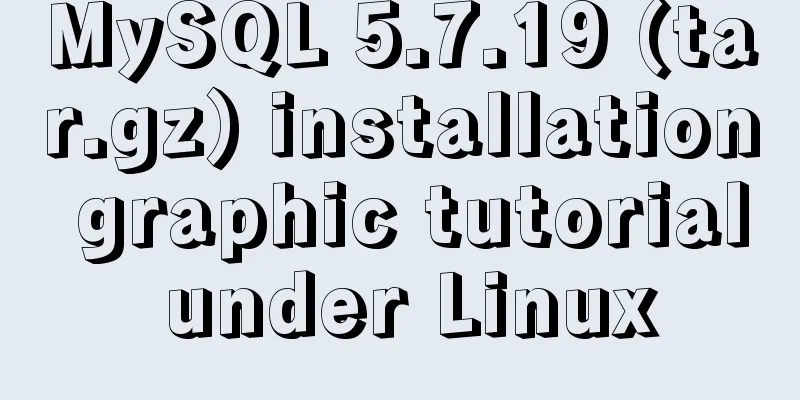Summary of Linux Logical Volume Management (LVM) usage

|
Managing disk space is an important daily task for system administrators. Once disk space is exhausted, a series of time-consuming and complicated tasks must be performed to increase the available disk space in the disk partitions. It also requires the system to be offline to process. Typically this task involves installing a new hard disk, booting into recovery mode or single-user mode, creating a partition and a file system on the new hard disk, mounting to a temporary mount point to move data from an undersized file system to the larger new location, modifying the contents of the /etc/fstab file to reflect the correct device name for the new partition, and rebooting to remount the new file system at the correct mount point. I want to tell you that when LVM (Logical Volume Management) first appeared in Fedora Linux, I was very resistant to it. My initial reaction was that I didn't need this extra layer of abstraction between me and my devices. It turns out I was wrong, logical volume management is very useful. LVM makes disk space management very flexible. It provides features such as reliably adding disk space to a logical volume and its file system while the file system is mounted and active, and it also allows you to merge multiple physical disks and partitions into a single volume group (VG) that can be split into logical volumes (LVs). Volume management also allows you to reduce the amount of disk space allocated to a logical volume, however, there are two requirements. First, the volume must be unmounted. Second, before the volume can be resized, the size of the file system itself must be reduced. An important note is that the file system itself must allow resizing operations. When resizing the file system, EXT2, 3, and 4 file systems all allow offline (unmounted) or online (mounted) resizing. You should carefully understand the details of the file systems you intend to resize, to verify that they can be resized at all, and especially whether they can be resized online. Extending a file system on the fly Before I install a new distribution on my production machines, I always like to run it in a VirtualBox VM for a while to make sure it doesn't have any fatal issues. One morning a few years ago, I installed a newly released version of Fedora in a virtual machine on my primary workstation. I think I have enough disk space allocated for the main file system where the VM is installed. However, I was wrong, and about a third of the way through the installation, I ran out of space on my file system. Fortunately, VirtualBox detected the low disk space condition and paused the virtual machine, then displayed an error message that clearly identified the problem. Please note that this problem is not caused by the virtual machine disk being too small, but rather by insufficient space on the host machine, resulting in the virtual disk on the virtual machine not having enough space to expand in the logical volume on the host machine. Since many modern distributions use logical volume management by default, and I have some free space available in my volume group, I can allocate the additional disk space to the appropriate logical volumes and then expand the host file system on the fly. This means I don't have to reformat the entire hard drive, reinstall the operating system or even reboot the machine. I simply allocated some free space to the appropriate logical volumes and resized the filesystem - all while the filesystem was online and running, and the VM was using the host filesystem. After resizing the logical volume and file system, I resumed the VM and continued with the installation process as if nothing had happened. Although you may never encounter this problem, many people have encountered the problem of running out of disk space while important programs are running. And, while many programs, especially Windows ones, are not as well-written and resilient as VirtualBox, Linux logical volume management makes it possible to recover without losing data or going through a time-consuming installation process. LVM Structure The disk environment structure of logical volume management is shown in Figure 1 below. Logical volume management allows multiple separate hard disks and/or disk partitions to be combined into a single volume group (VG). The volume group can then be subdivided into logical volumes (LVs) or used to allocate a large single volume. Ordinary file systems, such as EXT3 or EXT4, can be created on a logical volume. In Figure 1, two entire physical hard disks and a partition of a third hard disk are combined into a single volume group. Two logical volumes and file systems are created in this volume group. For example, an EXT3 or EXT4 file system can be created on each logical volume.
Figure 1: LVM allows combining partitions and entire hard disks into volume groups Adding disk space to a host is very simple and in my experience it is a rare occurrence. The basic steps are listed below. You can also create an entirely new volume group or add new space to an existing logical volume, or create a new logical volume. Add a new logical volume Sometimes it is necessary to add a new logical volume to a host. For example, after being notified that the The basic steps to add a new logical volume are as follows: 1 If necessary, install a new hard drive. 2 Optional: Create a partition on the hard disk. 3 Create a complete physical volume (PV) or a partition on the hard disk. 4 Allocate the new physical volume to an existing volume group (VG), or create a new volume group. 5 Create a new logical volume (LV) from the volume space. 6 Create a file system in the new logical volume. 7 Add appropriate entries in 8 Mount the file system. For a more detailed introduction, an example will be used as an experiment to teach about the Linux file system. Example This example shows how to use the command line to extend an existing volume group to add more space to it, create a new logical volume on that space, and then create a file system on the logical volume. This process is always performed on running and mounted file systems. Warning: Only EXT3 and EXT4 file systems can be resized while running and mounted. Many other filesystems, including BTRFS and ZFS, cannot do this. Installing a Hard Drive If there is not enough space in the volume group on the existing hard disk in the system to add, you may need to add a new hard disk and then create space to add to the logical volume. First, install the physical hard disk, and then follow the steps that follow. Create a physical volume from a hard disk First you need to create a new physical volume (PV). Use the following command, which assumes that the new hard drive has been assigned as pvcreate /dev/hdd It is not necessary to create any partitions on the new hard drive. The created physical volume will be recognized by the Logical Volume Manager as a newly installed raw disk or a type 83 Linux partition. If you want to use the entire hard disk, there is no particular advantage in creating a partition, and the disk space used for metadata can also be used as part of the PV. Expand an existing volume group In this example, I'll expand an existing volume group rather than create a new one; you can choose another approach. After the physical disk has been created, expand the existing volume group (VG) to include the space for the new PV. In this example, the existing volume group is named: MyVG01. vgextend /dev/MyVG01 /dev/hdd Create a logical volume First, create a logical volume from the existing free space in the volume group. The following command creates a LV of 50 GB size. The name of the volume group is MyVG01, and the name of the logical volume is Stuff. lvcreate -L +50G --name Stuff MyVG01 Creating a file system Creating a logical volume does not create a file system. This task must be performed individually. The following command creates an EXT4 file system in the newly created logical volume. mkfs -t ext4 /dev/MyVG01/Stuff Add a file system label Adding a file system label makes it easier to identify the file system if problems arise later. e2label /dev/MyVG01/Stuff Stuff Mounting the file system At this point, you can create a mount point and add the appropriate entry in the You can also check and verify that the volume was created correctly. You can use Resizing a Logical Volume in an LVM File System Since the first version of Unix, the need for file system expansion has always been there, and Linux is no exception. With Logical Volume Management (LVM), it is now even easier. 1 If necessary, install a new hard drive. 2 Optional: Create a partition on the hard disk. 3 Create a complete physical volume (PV) or a partition on the hard disk. 4 Allocate the new physical volume to an existing volume group (VG), or create a new volume group. 5 Create a new logical volume (LV) from the volume space, or extend an existing logical volume using some or all of the space in the volume group. 6 If a new logical volume was created, create a file system on it. If you need to add space to an existing logical volume, use the 7 Add appropriate entries in 8 Mount the file system. Example This example shows how to extend an existing volume group using the command line. It will add about 50GB of space to the Warning: Only EXT3 and EXT4 file systems can be resized while running and mounted. Many other filesystems, including BTRFS and ZFS, cannot do this. Installing a Hard Drive If there is not enough space in the volume group on the existing hard disk in the system to add, you may need to add a new hard disk and then create space to add to the logical volume. First, install the physical hard disk, and then follow the steps that follow. Create a physical volume from a hard disk First you need to create a new physical volume (PV). Use the following command, which assumes that the new hard drive has been assigned as pvcreate /dev/hdd It is not necessary to create any partitions on the new hard drive. The created physical volume will be recognized by the Logical Volume Manager as a newly installed raw disk or a type 83 Linux partition. If you want to use the entire hard disk, there is no particular advantage in creating a partition, and the disk space used for metadata can also be used as part of the PV. Add a physical volume to an existing volume group In this example, I will extend an existing volume group with a new physical volume. After the physical volume has been created, expand the existing volume group (VG) to include the space for the new PV. In this example, the existing volume group is named: MyVG01. vgextend /dev/MyVG01 /dev/hdd Extending a Logical Volume First, create a logical volume from the existing free space in the volume group. The following command creates a LV of 50 GB size. The name of the volume group is MyVG01, and the name of the logical volume is Stuff. lvcreate -L +50G --name Stuff MyVG01 Expanding the file system If you use the -r option, extending the logical volume will also extend the file system. This operation cannot be performed alone if you do not use the -r option. The following command resizes the file system in the newly resized logical volume. resize2fs /dev/MyVG01/Stuff You can also check and verify that the resized volume is correct. You can use the df, lvs, and vgs commands to do this. hint Over the past few years I've learned a few things about how to make logical volume management easier, and I hope these tips will be valuable to you. 1 Unless you have a clear reason to use another file system, it is recommended to use an expandable file system. Not all file systems except EXT2, 3, and 4 support resizing. The EXT file system is not only fast, it is also efficient. In any case, if the default parameters do not meet your needs, they (referring to file system parameters) can be tuned by a knowledgeable system administrator. 2 Use meaningful volume and volume group names. 3 Using EXT file system labels I know that, like me, most system administrators resist logical volume management. I hope this article has encouraged you to at least give LVM a try. I'd be glad if you could do that, because, since I've used it, my hard drive management tasks have become so much easier. About the Author David Both is a Linux and open source software advocate living in Raleigh, North Carolina. He has worked in the IT industry for over 40 years and with IBM for over 20 years. While at IBM, he wrote the first training course for the original IBM PC in 1981. He has taught Red Hat's RHCE courses and worked at MCI Worldcom, Cisco, and North Carolina. He has been working with Linux and open source software for nearly 20 years. via: https://opensource.com/business/16/9/linux-users-guide-lvm The above is a detailed summary of how to use Linux Logical Volume Management (LVM). For more information about how to use Linux LVM, please pay attention to other related articles on 123WORDPRESS.COM! You may also be interested in:
|
<<: JavaScript CollectGarbage Function Example
>>: Detailed steps and problem solving methods for installing MySQL 8.0.19 on Linux
Recommend
Write a formal blog using XHTML CSS
The full name of Blog should be Web log, which mea...
Tomcat security specifications (tomcat security reinforcement and specifications)
tomcat is an open source web server. The web base...
Complete steps for mounting a new data disk in CentOS7
Preface I just bought a new VPS. The data disk of...
HTML hyperlink a tag_Powernode Java Academy
Anyone who has studied or used HTML should be fam...
Writing daily automatic backup of MySQL database using mysqldump in Centos7
1. Requirements: Database backup is particularly ...
How to transfer files between Windows and Linux
File transfer between Windows and Linux (1) Use W...
JavaScript Function Currying
Table of contents 1 What is function currying? 2 ...
MySQL query learning basic query operations
Preface MySQL is the most popular relational data...
A few steps to easily build a Windows SSH server
The SSH mentioned here is called Security Shell. ...
Pure CSS code to achieve flow and dynamic line effects
Ideas: An outer box sets the background; an inner...
What command is better for fuzzy searching files in Linux?
1. Introduction This article mainly explains how ...
Detailed explanation of how to install the system on VMware workstation 14 pro (virtual machine)
This article introduces how to install the system...
Pure CSS drop-down menu
Achieve results Implementation Code html <div ...
About using Alibaba's iconfont vector icon in Vue
There are many import methods on the Internet, an...
Detailed process of building mysql5.7.29 on centos7 of linux
1. Download MySQL 1.1 Download address https://do...










